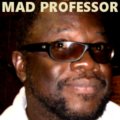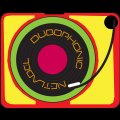| By
Steven Komarow and Tom Squitieri, USA TODAY
WWW, 2005 (ARCHIVED) - In
the two years before the Sept. 11 attacks,
the North American Aerospace Defense Command
conducted exercises simulating what the
White House says was unimaginable at the
time: hijacked airliners used as weapons to
crash into targets and cause mass
casualties. One of the imagined targets was
the World Trade Center. In another exercise,
jets performed a mock shootdown over the
Atlantic Ocean of a jet supposedly laden
with chemical poisons headed toward a target
in the United States. In a third scenario,
the target was the Pentagon — but that
drill was not run after Defense officials
said it was unrealistic, NORAD and Defense
officials say.
NORAD, in a written statement, confirmed
that such hijacking exercises occurred. It
said the scenarios outlined were regional
drills, not regularly scheduled
continent-wide exercises.
"Numerous types of civilian and
military aircraft were used as mock hijacked
aircraft," the statement said.
"These exercises tested track detection
and identification; scramble and
interception; hijack procedures; internal
and external agency coordination and
operational security and communications
security procedures."
A White House spokesman said Sunday that the
Bush administration was not aware of the
NORAD exercises. But the exercises using
real aircraft show that at least one part of
the government thought the possibility of
such attacks, though unlikely, merited
scrutiny.
On April 8, the commission investigating the
Sept. 11 attacks heard testimony from
national security adviser Condoleezza Rice
that the White House didn't anticipate
hijacked planes being used as weapons.
On April 12, a watchdog group, the Project
on Government Oversight, released a copy of
an e-mail written by a former NORAD official
referring to the proposed exercise targeting
the Pentagon. The e-mail said the simulation
was not held because the Pentagon considered
it "too unrealistic."
President Bush said at a news conference
Tuesday, "Nobody in our government, at
least, and I don't think the prior
government, could envision flying airplanes
into buildings on such a massive
scale."
The exercises differed from the Sept. 11
attacks in one important respect: The planes
in the simulation were coming from a foreign
country.
Until Sept. 11, NORAD was expected to defend
the United States and Canada from aircraft
based elsewhere. After the attacks, that
responsibility broadened to include flights
that originated in the two countries.
But there were exceptions in the early
drills, including one operation, planned in
July 2001 and conducted later, that involved
planes from airports in Utah and Washington
state that were "hijacked." Those
planes were escorted by U.S. and Canadian
aircraft to airfields in British Columbia
and Alaska.
NORAD officials have acknowledged that
"scriptwriters" for the drills
included the idea of hijacked aircraft being
used as weapons.
"Threats of killing hostages or
crashing were left to the scriptwriters to
invoke creativity and broaden the required
response," Maj. Gen. Craig McKinley, a
NORAD official, told the 9/11 commission. No
exercise matched the specific events of
Sept. 11, NORAD said.
"We have planned and executed numerous
scenarios over the years to include aircraft
originating from foreign airports
penetrating our sovereign airspace,"
Gen. Ralph Eberhart, NORAD commander, told
USA TODAY. "Regrettably, the tragic
events of 9/11 were never anticipated or
exercised."
NORAD, a U.S.-Canadian command, was created
in 1958 to guard against Soviet bombers.
Until Sept. 11, 2001, NORAD conducted four
major exercises a year. Most included a
hijack scenario, but not all of those
involved planes as weapons. Since the
attacks, NORAD has conducted more than 100
exercises, all with mock hijackings.
NORAD fighters based in Florida have
intercepted two hijacked smaller aircraft
since the Sept. 11 attacks. Both originated
in Cuba and were escorted to Key West in
spring 2003, NORAD said.
|
































